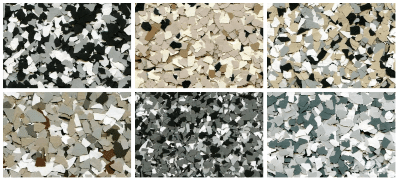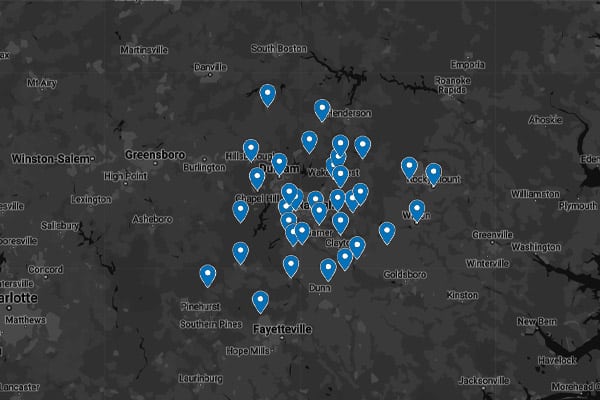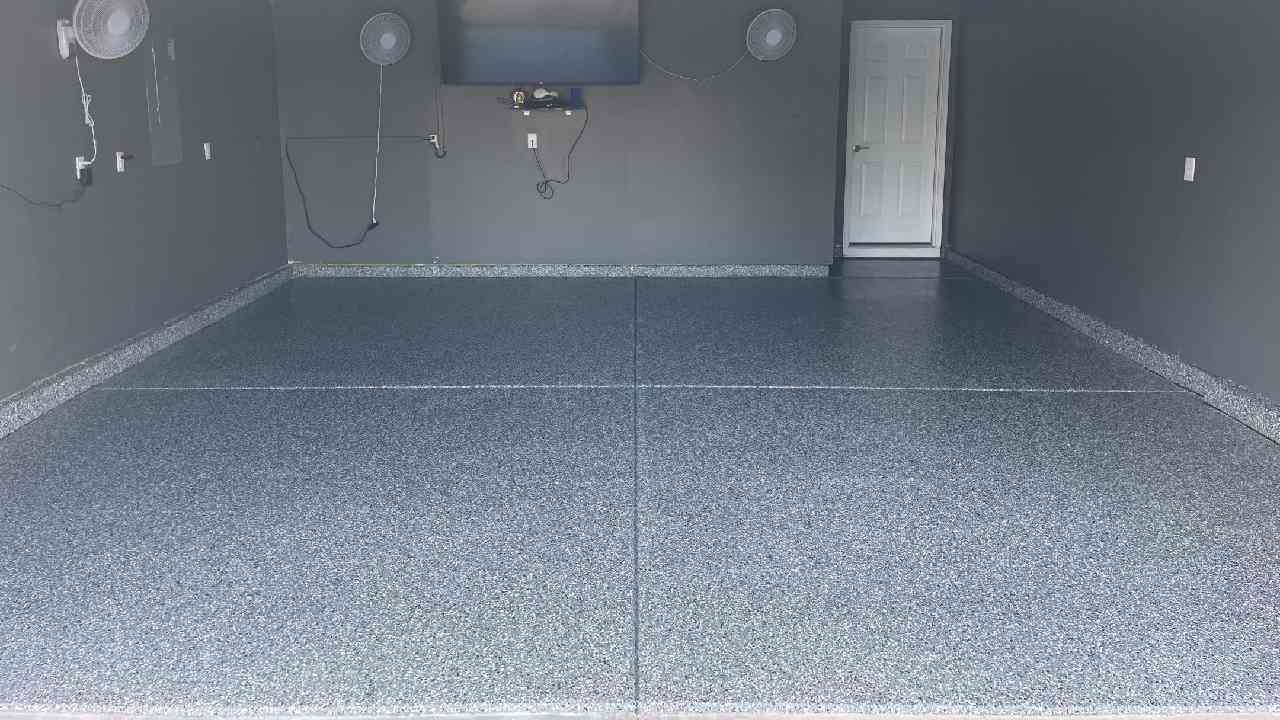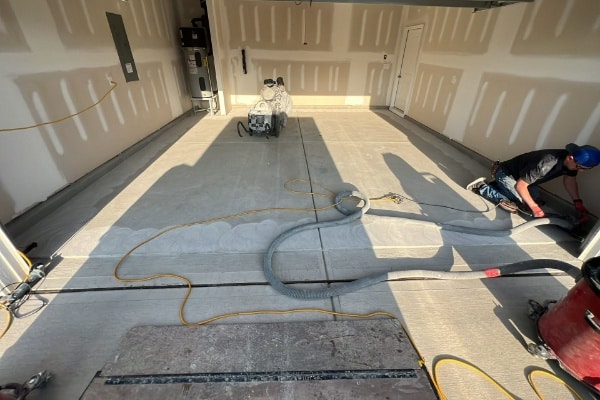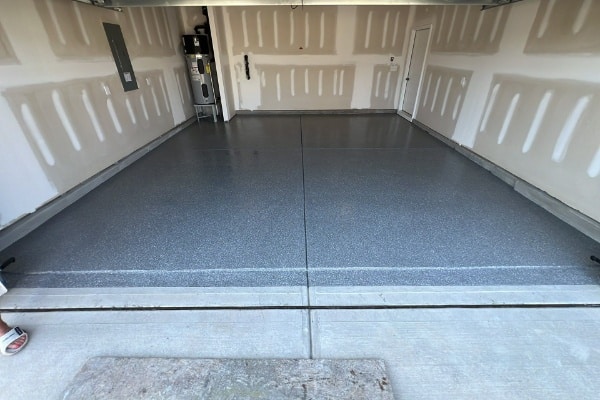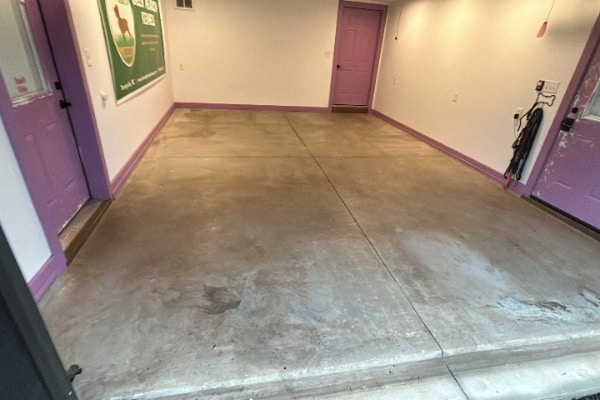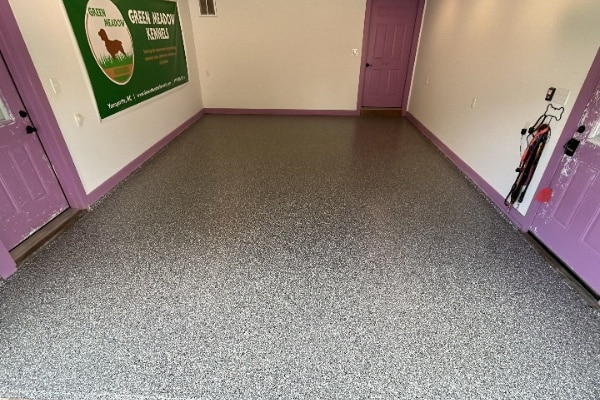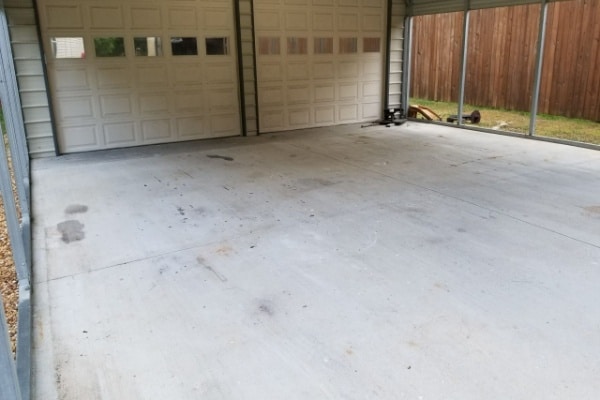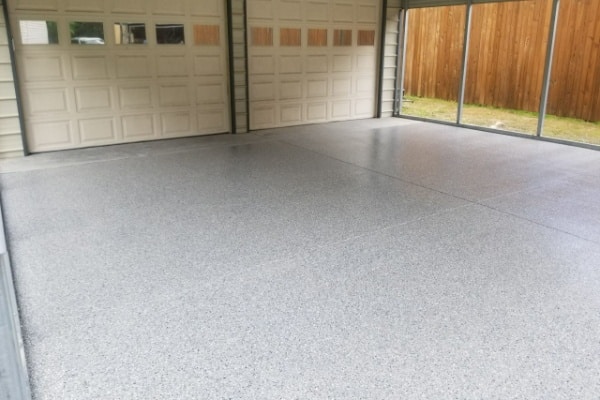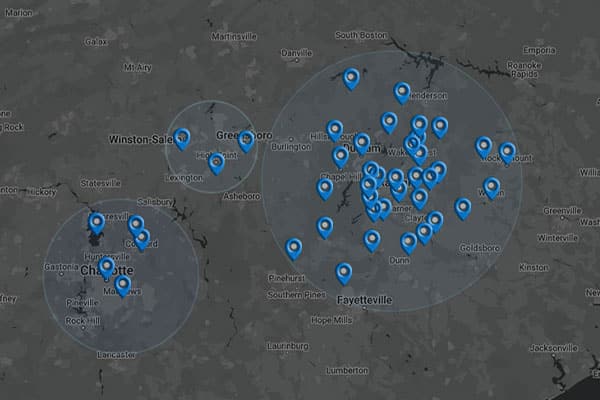The most common issue with epoxy is that it peels up off the garage floor soon after application and installation. Unfortunately, many interested in epoxy garage flooring do not realize that over 99% of these complaints do not involve a defective epoxy product. If that’s the case, then what causes epoxy-coated garage floors to peel up in the first place?
Why Epoxy Floors Peel
When appropriately applied, epoxy is a solid and challenging coating to remove, and that is why there are so many successful garage floor coatings that people love. Almost every problem you may have heard about epoxy flooring can be avoided by paying attention to the details. Listed below are the seven most common reasons for epoxy peeling up, along with the solutions on how to avoid them:
Poor Surface Profile
The leading cause of epoxy peeling is a poorly prepared concrete surface. The top issue associated with that is a lousy surface profile, which is the concrete’s roughness and porosity that allows the epoxy to bond mechanically. At the very minimum, the concrete needs to be acidly etched to obtain the correct surface profile for epoxy. The preferred method is to grind the concrete, but it is not always practical for the average DIY install.
Profiling the concrete exposes the pores so that the epoxy can sink in a little to adhere. If done incorrectly, the epoxy will not adhere well and can start to peel at some point after application. Once the concrete is profiled accurately, it should appear lighter and have a rougher texture that resembles 100 grit sandpaper. Drip some water onto the concrete in various areas to test it. The surface should turn dark immediately and absorb the water in less than a minute.
Beware the clean and etch solutions with the lesser expensive, single-coat garage floor epoxy kits. Often these solutions are not effective enough to create the proper surface profile because they usually contain citric acid crystals. These manufacturers mainly use citric acid because it is safe for the environment, and it is much more difficult to harm yourself if misused. However, the problem is that citric acid is the weakest of the concrete acid etching solutions, and it will not effectively profile a hard-troweled or machine-troweled surface. It does not work well on highly dense concrete either.
Another problem with these citric acid products is that they are also touted as a cleaning solution. However, suppose these solutions are applied to a dirty concrete surface. In that case, they do not work well cleaning and etching the concrete simultaneously. The concrete should always be thoroughly cleaned before applying the acid etch. For achieving the proper surface profile for an epoxy coating, muriatic acid or phosphoric acid is preferred.
Moisture
The second most common issue associated with the peeling of epoxy garage floors is moisture in the concrete. Water vapor is unable to pass through epoxy. Say you have moisture under any part of your slab below grade; in that case, the hydrostatic pressure created from water vapor trapped under the epoxy coating can lift the epoxy right off the surface.
Inspect your floor for signs of moisture, as efflorescence is the first sign that you may have a moisture problem. Same with dark spots on the floor. Suppose your slab is below grade on any side; in that case, it is imperative that you do a simple moisture test first before starting an epoxy floor project.
Oil and Contaminants
It is essential to check that any oil-stained areas cleaned previously are absorbing water once you have the correct surface profile for epoxy. These areas should be checked with the water drop test. It is not uncommon for an area previously oil-stained to be darker in color than the concrete surrounding it. This is because it will absorb epoxy and provide good adhesion if it absorbs water.
Silicone from tire dressing products, polymer compounds that leach out of warm tires, and other contaminants will not let the epoxy adhere either. So instead, perform a water drop test around the areas where the car tires sit. Silicones and tire polymer residue will not be removed by acid etching. Therefore, you will need to grind the concrete to remove the residue if these areas do not pass the water drop test after being acid-etched.
Acid Etch Residue on the Surface
When acid etching your garage floor, the solution reacts with the free lime in the concrete, which causes a breakdown of the calcium at the surface, exposing the concrete’s open pores. This calcium gets deposited onto the surface in the form of a very fine white dust. In many cases, this fine white dust is not effectively removed before the epoxy is applied, leading to the peeling of epoxy floors.
The dust likes to stick to the irregularities in the surface and can be difficult to remove because it is so fine. The epoxy adheres more to the dust, and not the surface of the epoxy is applied over concrete with this fine white dust. Eventually, it will peel up, exposing the white dust on the underside of the peeled epoxy coating.
How much free lime was present on the surface of the concrete and how well the floor was neutralized and flushed afterward determines the amount of dust left on the surface after acid etching. Do not allow the floor to begin to dry during the acid etching process. Instead, using liberal amounts of water and a deck brush, lightly scrub it as it is being washed. If you get this white residue, it can be removed after multiple scrub downs to get it all off the surface.
Sealed Concrete
Concrete that has been previously sealed will not allow the epoxy to adhere to it, and acid etching will not remove a sealer. Acid only responds to the free lime in concrete, as stated previously. The acid etch solution will sit on the surface and not do anything if the concrete is sealed. People attempting to acid etch a sealed garage floor has been the cause of more than one case of epoxy peeling.
Grinding a previously sealed garage floor is the only way to profile it correctly. Grinding the floor will remove the sealer at the surface and profile it simultaneously. A concrete sealer test must be done if you are unsure if your floor has a sealer. This is done by dripping water over various areas of the concrete. Suppose the water immediately beads up or sits there for a few minutes without being absorbed into the concrete. In that case, you have a sealer on the garage floor. You do not have a sealer on the floor if the concrete turns dark and the water is absorbed after a few minutes.
Apply a few drops of diluted muriatic acid to the surface if your tests are inconclusive. No sealer is present if it starts to bubble and fizz. The concrete is sealed if it just sits there like a drop of water and does nothing.
Excess Laitance
A weaker top layer of cement is laitance. It can sometimes have a crazy look to it with what appears to be very fine cracks. This is because it contains a fine cement paste top layer produced by excess water when troweling the finish. Also, it can be caused by concrete finishers who spray water on the surface of the concrete to make it smoother. This fine layer will be removed, and the surface will be prepped appropriately for epoxy by grinding the concrete. Acid etching, however, will not do this very well. It will only rough it up. As a result, you end up with a softer concrete surface that is not bonded well to the rest of the concrete.
A weak mechanical bond to the concrete is created that can eventually peel up later when the epoxy is applied to this type of surface. A sign of excess laitance is concrete dusting which indicates that you should grind the garage floor instead.
Test the concrete for excess laitance by scraping the surface hard with the tip of a screwdriver if you do not have dusting. It should not leave much of a mark if any at all. If it does not, then you should be okay to acid etch.
Soft Concrete Surface
A soft surface can be caused by poor concrete, lousy finishing, or both. Heavy surface dusting, easily scarred or gouged areas, and crumbling concrete are all indications of soft concrete. The only solution to a soft concrete surface is to grind it. It may also require the application of a densifier to harden the surface. However, sometimes even that will not prepare the concrete properly for epoxy.
We recommend contacting a professional floor coating company or installer to inspect the surface and do the job for you if they deem it feasible if you have a soft concrete surface.
Why Choose TAGG Concrete Coatings?
TAGG Concrete is a full-service concrete contractor that provides high-quality concrete coatings and solutions to businesses and homeowners in North Carolina. We have a wide range of products and services to meet your needs, including commercial coatings, concrete coatings, epoxy floor coatings, garage floor coatings, patio floor coatings, and pool deck coatings. Our team of experts will work with you to find the perfect solution for your project.
Get a Free Quote
TAGG Concrete Coatings proudly offers concrete coating solutions to Cary, Chapel Hill, Charlotte, Concord, Durham, Lake Norman, Kannapolis, Matthews, Raleigh, and Wake Forest. Our experienced professionals will work with you to provide the finest service in the industry.
Contact us today to learn more about our services or schedule a consultation!
Receive a free quote at (919) 439-8879 or get a quote online at www.taggconcretecoatings.com.








